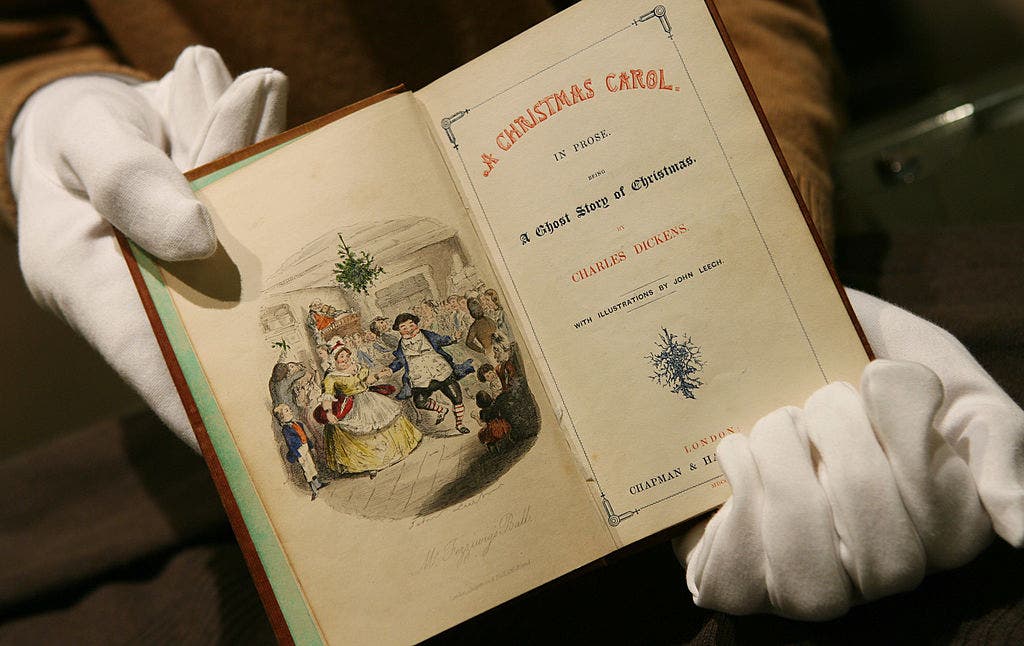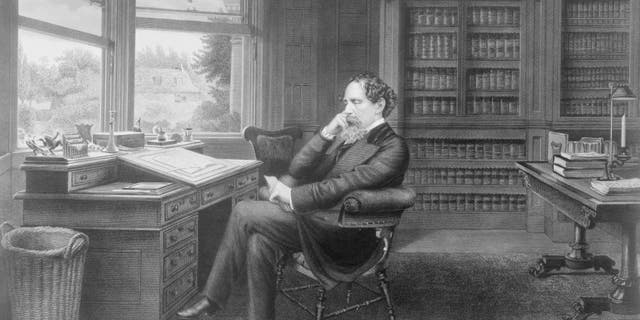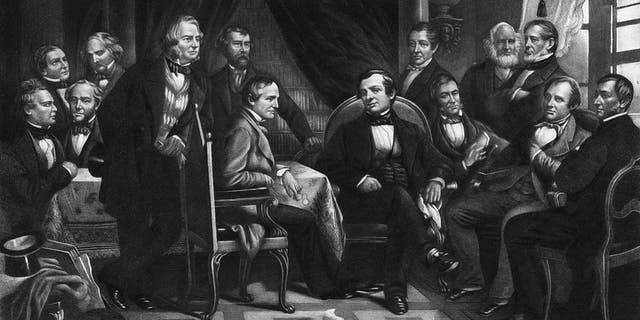On this day in history, Dec. 19, 1843, Charles Dickens publishes ‘A Christmas Carol’

“A Christmas Carol,” a globally celebrated timeless tale of heartwarming human redemption crafted as a haunting holiday ghost story, was published in London on this day in history, Dec. 19, 1843.
Except for the biblical narrative of the birth of Christ itself, “A Christmas Carol” may be the world’s most well-known and most frequently retold tale of the holiday.
English author Dickens, 31 years old at the time, had recently gained literary celebrity following the release of “Sketches by Boz,” “The Pickwick Papers” and “Oliver Twist.”
“‘A Christmas Carol’ was written over a few short weeks to ensure its publication before Christmas 1843, but its message has stood the test of time,” notes the Charles Dickens Museum of London.
“Recognized by critics on its publication as ‘a national benefit to every man and woman who reads it a personal kindness’, the story has been retold and adapted ever since.”
Rich, miserly and lonely, Ebenezer Scrooge derives pleasure only in his money, bitterly laments the arrival of Christmas and the joy displayed by its celebrants, and detests the indigents who suffer on the streets of Industrial Revolution London.

An employee at Sotheby’s holds an 1843 first edition of the classic book “A Christmas Carol” by Charles Dickens in London, on Tuesday, December 5, 2006.
(Photo by Suzanne Plunkett/Bloomberg via Getty Images)
“If they would rather die, they had better do it, and decrease the surplus population” Scrooge says in one particularly disturbing insight into his soul.
Yet he is filled with goodwill toward man after a series of ghosts take him on a journey through his life of joyful past, detestable present and ominous future.
“His wealth is of no use to him. He don’t do any good with it,” Scrooge’s nephew says, in a revealing moment of the emptiness of his dispirited existence.
Characters and catchphrases from the short book have stood the test of time.
“A Christmas Carol” has gone down as Dickens’ most famous and most culturally impactful story, in a career that produced a long list of classics that followed. Among them: “David Copperfield,” “A Tale of Two Cities” and “Great Expectations.”
Characters and catchphrases from the short book have not only stood the test of time; they entered the lexicon on both sides of the Atlantic and remain there nearly 200 years later.

British novelist Charles Dickens (1812-1870) sat in his study in Gads Hill near Rochester, Kent, circa 1860.
(Photo by Epics/Getty Images)
Scrooge is synonym for a miser.
His signature terse retort, “Bah, humbug,” is uttered to express grumpy mocking disdain.
“Dickensian” describes situations of urban decay or the poor who live among it, such as Scrooge’s browbeaten employee, Bob Cratchit.
“Dickens’ novella about the original Christmas grinch has been a holiday staple for nearly two centuries.” — National Endowment for the Arts
“God bless us, every one,” the gleeful refrain at the end of “A Christmas Carol,” spoken by Cratchit’s crippled son Tiny Tim, is an often-used toast that sums up almost any joyful occasion when other words fail.
“Though he spent mere weeks writing it, Dickens’ novella about the original Christmas grinch has been a holiday staple for nearly two centuries, giving rise to countless adaptations for stage and screen,” Paulette Beete wrote in 2020 for the National Endowment for the Arts.
MEET THE AMERICAN WHO CREATED THE FIRST DEPARTMENT STORE SANTA: IMMIGRANT ENTREPRENEUR JAMES EDGAR
Beete cites an incredible list of adaptions: more than 100 film versions, according to the International Movie Database, 20 television series that have featured “A Christmas Carol” or its characters; four operas, two ballets; even a video game.
Several versions of “A Christmas Carol” have become annual holiday viewing fare for millions of families.
A 1951 black-and-white version starring Alistair Sims as Scrooge is considered a classic among the many adapts and is still found on television nearly 75 years later.

George C. Scott (at left) stars as the stingy businessman Ebenezer Scrooge, and Edward Woodward (at right) is the Ghost of Christmas Present, in “A Christmas Carol,” Charles Dickens’ classic holiday tale. Originally broadcast on CBS on Dec. 17, 1984. Image dated April 1, 1984.
(Photo by CBS via Getty Images)
Actor George C. Scott of “Patton” fame turned in a critically acclaimed performance as Scrooge in 1984.
Nontraditional versions of the story are celebrated, too. Among them: “The Muppet Christmas Carol” starring Michael Caine in the title role amid a world of puppets; and the animated “Mickey’s Christmas Carol” with Disney icon Mickey Mouse in the role of Cratchit.
Dickens’ beloved tale of Christmas in 19th-century London may have had its origins in the United States.
The young author visited the United States in 1842 where he met one of his literary icons, the much older and more celebrated American author Washington Irving.
Dickens spent time with Irving and his brother, Ebenezer Irving.
Dickens returned to England and began writing “A Christmas Carol.”
CLICK HERE TO GET THE FOX NEWS APP
Character archetypes who liven the pages of “A Christmas Carol” first appeared in Irving’s writing, literary scholars and Irving fans have noted, as do many of the idyllic images we now associate with a classic 19th-century Christmas.

American author, biographer, historian and diplomat Washington Irving (center, sitting in black suit) with literary friends, circa 1830. From an original engraving by Geo. E. Perine.
(Photo by Kean Collection/Getty Images)
“Irving (as alter ego Geoffrey Crayon) waxes rhapsodic over the traditional pleasures of Christmas at a fictional country estate called Bracebridge Hall,” notes the website of Historic Hudson Valley, where Irving lived and placed many of his stories.
“If any author can lay claim to inventing this venerable holiday, it’s Washington Irving.”
“I say, gentlemen, I do not go to bed two nights out of seven without taking Washington Irving under my arm upstairs to bed with me,” Dickens reportedly said, according to multiple sources.
“God bless us, every one.” — Tiny Tim Cratchit
Yet there is no doubting the impact of “A Christmas Carol” on the holiday season or on English-language literature.
CLICK HERE TO SIGN UP FOR OUR LIFESTYLE NEWSLETTER
Scrooge “became as good a friend, as good a master, and as good a man, as the good old city knew, or any other good old city, town, or borough, in the good old world,” Dickens writes at the end of the famous tale.
“Some people laughed to see the alteration in him, but he let them laugh … His own heart laughed: and that was quite enough for him.”
Share this news on your Fb,Twitter and Whatsapp
Times News Network:Latest News Headlines
Times News Network||Health||New York||USA News||Technology||World News